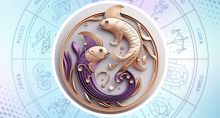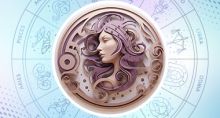Benefits of Owning The Precious Nagmani
What is Nagmani?
There are many people in India who dream of finding the Nagmani one day. Once they find it, they believe that their lives will witness miraculous changes as money, good fortune, and divine blessings will be theirs forever. Unfortunately, some also get scammed by con artists who palm off some worthless bauble to them as the Nagamani and leave them poorer by lakhs of rupees.
But what is the Nagmani? The name says that it has something to do with snakes, as Nag means 'snake'. It is a mythical stone or pearl that is found on the hood of a snake, and no ordinary snake, mind you! Ancient Hindu texts, like the Brihat Samhita, Garuda Purana, and Raj Vallabh, claim that there are Manidhari Nag ( snake holding a priceless snake pearl) in the world. The Nagmani is also called Nagamanikyam.
According to the Puranas, the Manidhari Nag or snake in question could be Sheshnag, Takshak, or Vasuki, all of which are major snakes in Hindu mythology. Serpents born in the clans of Takshak and Vasuki supposedly carry the Nagmani.
Nagmani is a blue, green, or yellow-colored gemstone. It has an unusual glow that brightens its surroundings. The belief is that someone who carries a Nagmani is immune to all poisons.
But some feel that it is just a superstition. Others claim that the Nagmani is a fake mineral element called chlorophane.
This powerful and magical stone supposedly forms inside a cobra’s head. Bright yellow during the daytime, it is said to radiate a dazzling red glow at night. It can bring fortune and great power to the lucky owners, as per mythology.
The cobra spits the Nagmani out on full-moon and new-moon nights before praying to its deity. Nagmani hunters wait for this opportunity to steal the gem. They conceal it in a pile of cow dung. After the prayer is over, the cobra looks for the stone and dies of sorrow when it fails to find it. The hunter then takes the snake pearl from the cow dung and washes it clean with milk and rosewater.
Due to the widely prevalent beliefs about the amazing Nagmani benefits, gullible folks have paid crores to own a Nagmani, according to some reports.
In Kerala, there is an interesting story about the origin of the Nagmani myth.

The Legend of Pambummekkatt Namboodiri
The origin of the Nagmani myth is tied to the tale of Pambummekkat Namboodiri. The Namboodiris are the Brahmins of Kerala. It is also the story of the origin of Pambumekkatt Mana in Thrissur. This is the first temple for serpent worship in Kerala.
Many years ago, the people of Mekkatt Mana were living a life of dire poverty. So, the Namboodiri went to Thiruvanchikulam temple and prayed there for 12 years to overcome their hardships. One day, he came across a mysterious sage near the Thiruvanchikulam pond who wore a strange ring on his finger. The Namboodiri asked the sage to show him the ring. He did so but vanished once the Namboodiri returned the ring. The next day, the Namboodiri saw him again and asked him who he was. The sage then revealed that he was Vasuki, the God of snakes.
Vasuki then said that he would grant the pious Namboodiri's wish. The latter asked if Vasuki would accompany him to his house and bless the impoverished Mekkatt Mana with prosperity. After the Namboodiri returned to the Mana, Vasuki and Nagayakshi, the Goddess of Snakes, manifested before him and instructed him to install their idols as the family deities. The Namboodiri did so, and after this, Mekkatt Mana got the name 'Pambummekkatt Mana'. ‘Pambu’ in Malayalam means ‘snake’.
Another version says that Vasuki gave the Nagmani to the Namboodiri as a gift, and he placed it in the Mana.
Pambummekkatt Mana is the first Nagaraja temple. Locals believe that there is a five-headed snake residing inside the temple. They also believe that Vasuki and Nagayakshi reside in the temple’s eastern portion or ‘Kizhakkini.’ One can find 5 sarpa kavus near the temple. The oil of a lamp that is always burning can supposedly cure problems caused by snake venom.
There is another story associated with the Nagmani.
Ichchadhari Naag/ Naagin
Ichchadhari Naag or Naagin are shape-shifting serpents who act as guardians of the the Naagmani/ Nagamanikyam, which they protect with their lives.
Supposedly, a normal cobra turns into an Ichchadhari Naag or Naagin after 100 years of penance. After getting Shiva’s blessings, they can take other forms, including those of humans. It is said that their life span exceeds a hundred years, and they do not get old. But when someone kills a Naag or Naagin, the killer’s image is captured in its eyes, and the partner of the dead snake will seek vengeance. They have the ability to take any form when they seek revenge, but they will have to assume their true form when they hear the sound of the magudi/pungi/been (snake charmer’s instrument). Such are the beliefs about Ichchadari snakes.
Is the Nagmani real?
Scientific proof regarding the existence of the Nagmani is lacking. There are only two animal-derived gems – pearl and red coral. In several countries, including India, there is something called snake stone or viper’s stone. It is a folk medicine for snake bites. It is basically animal bone (which need not be from a snake), and people use it to treat venomous snake bites. One can find this practice in India, Africa, and South America.
There is also another kind of Nagmani that is obtained from the skulls or tails of poisonous snakes, especially cobras. So it is called cobra pearl. At times, a cobra will use only a small portion of venom when killing prey, though it may release more. The remaining venom is deposited on the top portion of its skull. As the venom keeps accumulating, it turns into a solidified blue-black mass that looks like a gem. This ‘gem’ is quite rare as most cobras tend to use all of their venom when killing prey.
Usually, this is taken from snakes after they die, but mass killings of snakes for this gem are not uncommon.
Benefits of Having a Nagmani/Snake Pearl
The illuminated Nagmani is said to be priceless. People believe that it has the power to bring one’s fortunes back and bestow lots of money, luck, and wealth. It can eliminate poverty and bring victory and divine blessings.
But there are grave risks associated with acquiring this stone, so it is very rare for someone to possess one.
Nagmani has healing and protective properties, according to Vedic astrology. The Nagmani’s benefits include:
· Better physical and mental health
· Protection from negative energies and evil spirits
· More wealth and prosperity
· Good relationships and social status
· Aids spiritual growth and enlightenment




















